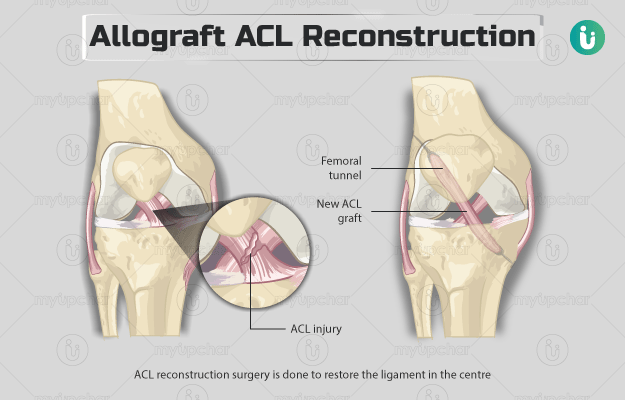Summary
Allograft ACL reconstruction is a surgical technique usually used to replace a torn anterior cruciate ligament (ACL) with tissue from a donor (an allograft). ACL is a piece of fibrous tissue that supports your knee joint. The ligament is often damaged in sportspersons who play sports like football, basketball, and skiing, causing pain and instability in the knee. You won't be able to put any weight on the affected leg either.
This surgery is done to fix the tear in the ACL and improve knee stability. During the surgery, the torn ligament is substituted with a tendon from an organ donor (allograft). The surgery takes about two to two and a half hours to complete and is performed as an outpatient procedure. However, this surgery is not for everyone. If you lead a sedentary lifestyle or can live a life with slight instability in the knee after physiotherapy, you do not need this procedure.






































